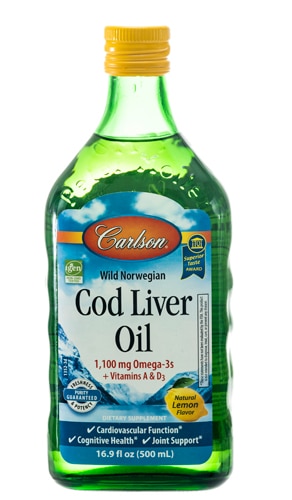Vitamin A often goes overlooked but the essential micronutrient deserves an A-plus. Operating as both a fat-soluble vitamin and an antioxidant, vitamin A is responsible for maintaining everything from the quality of your skin to your ability to see. Here’s a primer on the first vitamin in the alphabet—and how you can get your A-game on for maximum benefit.
What is vitamin A?
Humans are intricate entities—and the vitamins that nourish us are just as complex. Two primary forms of vitamin A exist. The first, preformed vitamin A (or retinol) is produced directly by your body and plays a crucial role in eye function, creating pigments in the retina of the eye and facilitating good vision. Additionally, it fosters the growth of new skin cells, thus naturally encouraging restoration and repair, and aids in immunity and reproduction.
The second form, pro-vitamin A, is primarily obtained from the beta-carotene found in colorful fruits and vegetables, which your body then converts into vitamin A. Beta-carotene functions as an antioxidant, thereby shielding cells against free radical damage and protecting you against inflammation and the issues that can manifest in the wake of oxidative damage.
What’s more, both forms of vitamin A may bolster bone health and the maintenance of soft tissues and prevent urinary stones. Rich in antiviral properties, vitamin A can also help restore the integrity of your mucous membranes—rendering it particularly valuable when you have a cold or the flu—and thwart acne.
How much vitamin A do I need?
As with most vitamins and minerals, the recommended dietary intake of vitamin A is contingent upon gender, age and reproductive status. Adult women require 700 mcg per day; men, 900 mcg. Pregnant women, meanwhile, should get 770 mcg daily.
What are the signs that I’m not getting enough?
Vitamin A deficiency is rare in the United States, and mostly tends to impact developing countries were vitamin A-rich foods (see below) are in short supply. (Indeed, up to 500,000 children around the world become blind each year due to a dearth of vitamin A, and Southeast Asians are the hardest hit.)
And yet, vitamin A deficiencies do happen, particularly for those who have genetic mutations that don’t allow them to convert beta-carotene into vitamin A very well. Premature infants (who frequently have low vitamin A levels in their first year) and people with cystic fibrosis are also “more likely than others to have trouble getting enough Vitamin A,” the National Institutes of Health reports.
Some of the symptoms of a deficiency may be vague, but an inadequacy usually makes itself known in fatigue, followed by night blindness. Other signs include dry eyes, anemia, diarrhea, and broken nails, as well as scaly skin, a decreased ability to fight off infections and inhibited growth in children. As mentioned above, chronic vitamin A deficiency can lead to macular degeneration—a serious eye condition that can lead to blindness.
What vitamin A-rich foods should I reach for?
Lucky for us, a number of super (and delicious) foods boast ideal amounts of vitamin A. Root vegetables—such as butternut squash, pumpkin and sweet potatoes—are three of the leading sources of pro-formed vitamin A.
To get the most of out of these eats, bake or roast them with butter (another great source of vitamin A) or olive oil; as Christy Brissette, MS, RD, says, “Adding fat increases your body’s absorption of beta-carotene,” while studies show you need as little as a teaspoon of butter or olive oil to reap the benefits.
Other top choices for pro-formed vitamin A/beta-carotene include leafy greens such as spinach, kale and Swiss chard, as well as cantaloupe, red peppers and parsley. The best eats for preformed vitamin A are beef liver, cod liver oil, salmon, cheddar cheese, liverwurst and egg yolks.
Is it possible to have too much vitamin A?
Absolutely. Given that vitamin A is a fat-soluble vitamin, any amount that your body doesn’t use accumulates in your fat cells and liver, where it can become toxic (and even, in some cases, fatal); symptoms of this include dizziness, nausea, headaches and coma, the NIH reports.
Although it’s possible to consume too much vitamin A through animal-based foods such as liver, most excesses are due to supplementation. That doesn’t mean you should pass on the dandelion greens and cabbage: you needn’t worry about getting too much beta-carotene from food.
Should I take vitamin A supplements?
Because vitamin A can be harmful at high doses, supplements should be taken only at your doctor’s recommendation—and he or she can take a blood test to determine if you’re in need of additional vitamin A support. (What’s more, vitamin A interacts with other medications, including weight-loss drugs such as Orlistat and psoriasis treatments, which should be discussed with your doctor.) Should you and your physician find that you need a boost, be sure to go with a non-GMO vitamin A supplement that’s free of artificial flavors, colors and preservatives. Your immunity—and eyes—will thank you for it.
†These statements have not been approved by the Food and Drug Administration. These products are not intended to diagnose, treat, cure or prevent disease.





